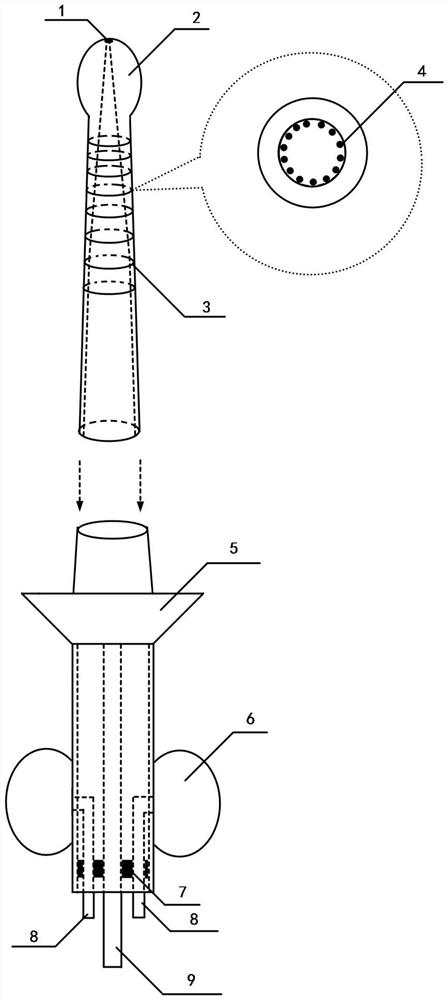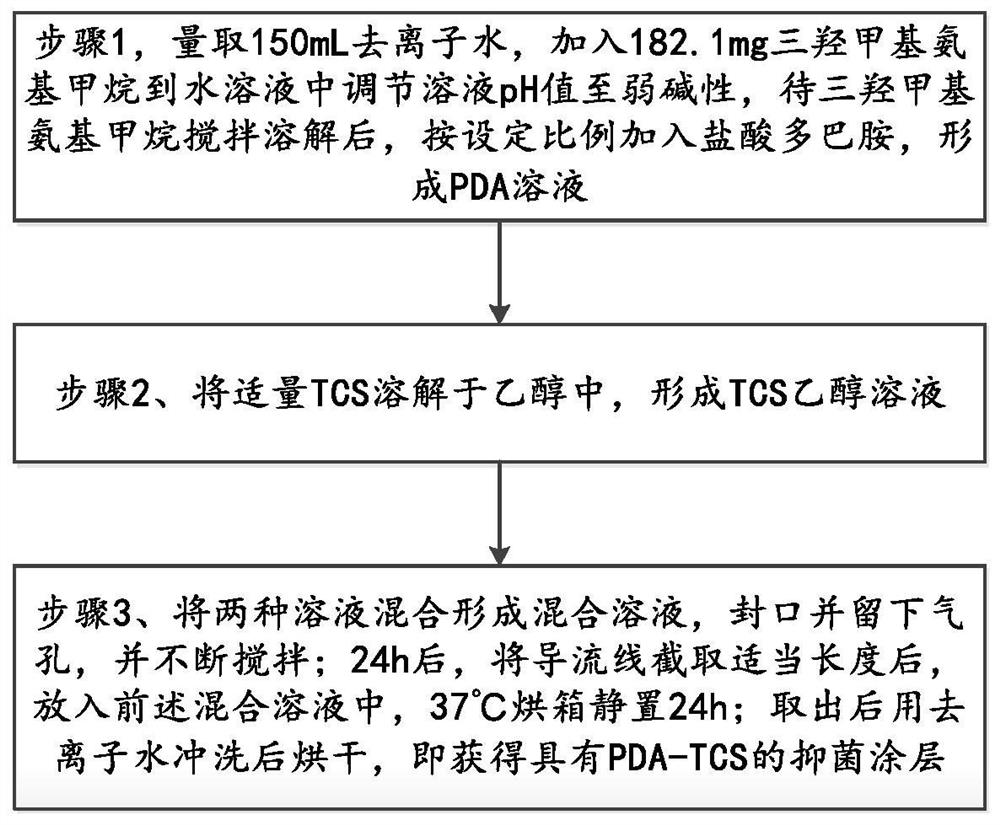Catheter with antibacterial coating
A urinary catheter and coating technology, which is applied in the field of urinary catheters with antibacterial coating, can solve the problems of prolonging the recovery time, increasing the economic burden of patients, aggravating the difficulty of treatment, etc., and achieving difficult aggregation and good dispersion , the effect of good rigidity
- Summary
- Abstract
- Description
- Claims
- Application Information
AI Technical Summary
Problems solved by technology
Method used
Image
Examples
Embodiment Construction
[0023] In order to make the purposes, technical solutions and advantages of the embodiments of the present application clearer, the technical solutions in the embodiments of the present application will be clearly and completely described below in conjunction with the drawings in the embodiments of the present application. Obviously, the described embodiments It is a part of the embodiments of this application, not all of them. Based on the embodiments in this application, all other embodiments obtained by persons of ordinary skill in the art without creative efforts fall within the protection scope of this application.
[0024] figure 1 It is a schematic diagram of the composition and structure of the urinary catheter with antibacterial coating of the present invention. The urinary catheter is composed of a guiding part and a hand-holding part. Among them, 1 is an opening, 2 is an oval soft head, 3 is a plastic ring, 4 is a guide line, 5 is an inverted trapezoidal limiting p...
PUM
 Login to View More
Login to View More Abstract
Description
Claims
Application Information
 Login to View More
Login to View More - Generate Ideas
- Intellectual Property
- Life Sciences
- Materials
- Tech Scout
- Unparalleled Data Quality
- Higher Quality Content
- 60% Fewer Hallucinations
Browse by: Latest US Patents, China's latest patents, Technical Efficacy Thesaurus, Application Domain, Technology Topic, Popular Technical Reports.
© 2025 PatSnap. All rights reserved.Legal|Privacy policy|Modern Slavery Act Transparency Statement|Sitemap|About US| Contact US: help@patsnap.com



